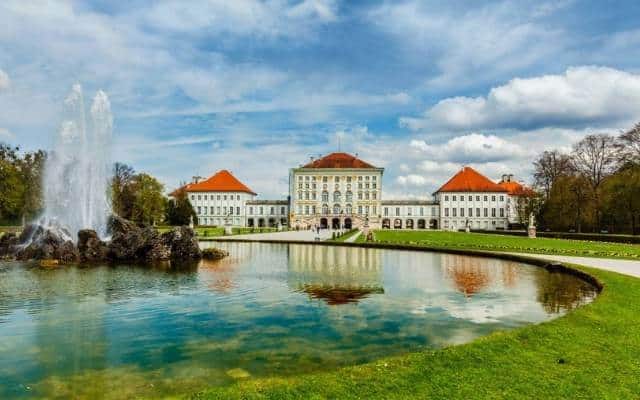There stands a number of famous regal Palaces In Munich, all set right amid the cities ever-changing urban background.
This city has a rich vein of priceless architecture set in some stunning locations, just begging to be visited and ticked off a tourism list.
But there are also some Palaces in Munich that likely no one has heard of, which will equally inspire any architectural or historical enthusiast.
Spanning a number of styles, and bursting with plenty of history, there is no shortage of palaces to enjoy as part of your Munich experience, and in this article we’ll examine a few of them for your consideration.
Nymphenburg Palace Munich
Nymphenburg Palace was created as a summer home in the 1600s for the then-heir to the throne, Max Emanuel.
At the time of its being built, it was still way out in the countryside, making it a sprawling and appealing getaway place for the royals.
It began as a simple cube-shaped building but, over time, grew into the sprawling structure that it is today.
The large Great Hall was decorated in accordance with the Rococo style, which is still present today.
One of the other famous artistic features of the palace is the Gallery of Beauties painting that was commissioned for King Ludwig I.
Because of the increasing popularity of landscape gardens in Germany in the second half of the 18th century, they were added to the complex during this time.
Otherwise known as Schloss Nymphenburg this is one of the most visited Palaces in Munich.
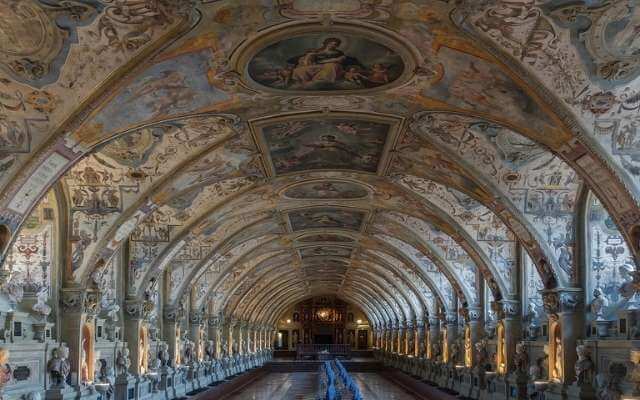
Munich Residenz
From 1508 to 1918, the Munich Residenz was the seat of the government as well as the place of residence of the Bavarian Dukes.
It began in the year 1385 as a castle in the city and was then changed by the rulers of the times throughout the century into the palace it is today.
The art collections and the rooms both span a period of time that starts around the Renaissance and goes into the early Rococo and Baroque epochs.
Unfortunately, much of the Munich Residenz was ruined during World War II, but from 1945 on, it has been gradually rebuilt.
A number of museums are now contained within the Bavarian Palace Administration, as well as a variety of other cultural institutions.
It is now considered one of the biggest museum complexes in all of Bavaria.
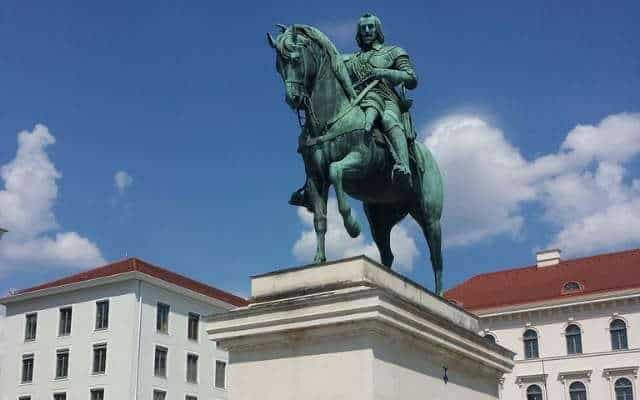
Palace Ludwig Ferdinand Munich
Dating back to the early 19th century, Palace Ludwig Ferdinand is a stunning structure found in Munich that was commissioned by businessman Karl Anton Vogel, a well-known socialite of the era.
It was built according to the design of Leo von Klenze who happened to be the Court architect of Bavarian King Ludwig I.
As for Vogel, he was a famed producer of both gold and silver thread during the era, making him, at the time, a famous enough name to make this palace stand out in the history books.
The palace worked as Klenze’s place of residence for quite some time, though later on, Bavaria’s Alfons and Prince Ludwig Ferdinand inhabited it.
Prince Ferdinand was the direct grandson of King Ludwig I and his wife Princess Therese of Saxe-Altenburg.
Today, it plays host as the headquarters of global technology company Siemens.
Also known as Alfons Palais and the Siemens Palais as well as Palais Ludwig Ferdinand (not palace).
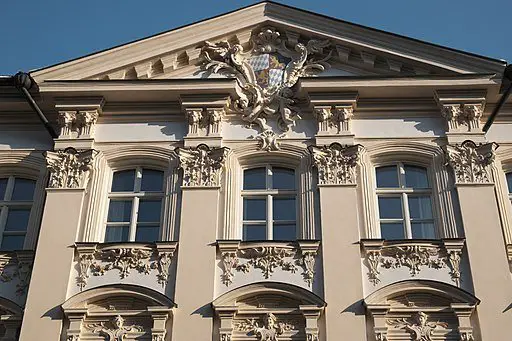
Holnstein Palace Munich
This historic building found in Munich, the Holnstein Palace, has since the year 1818, served as the permanent residence of the Archbishop of Munich and Freising.
The mansion was built by architect François de Cuvilliés between 1733 and 1737 and was made with Sophie Caroline von Ingelheim’s designs in mind.
Today, it is one of the best-rococo style Palaces in Munich, since the Palais Piosasque de Non was destroyed in World War II.
The layout of the palace consists of a four-winged building positioned around a courtyard, with the rear of the building once representing the privacy of the Count and the front being used for representative purposes.
All around the palace, the rococo style and the various interiors have been carefully preserved in their original state thus maintaining their history beautifully.

Palais Preysing Munich
The Palais Preysing is a baroque-style mansion that has been the residence of the counts of Preysing for centuries now.
Josef Haffnera built the mansion between the years 1723 and 1728 with the intention of count Johann Maximilian IV Emanuel to reside in it.
It was the very first of the Munich palaces to be built in the now-iconic Rococo style, with the exterior wall of this palace decorated well with stucco.
Unfortunately, it was damaged during World War II, but afterwards, it was restored in accordance with old building principles and practices in mind.
Today, it is a building that plays host to various offices, houses and shops. The portion of the palace with the ceremonial staircase is open to be appreciated by visitors.
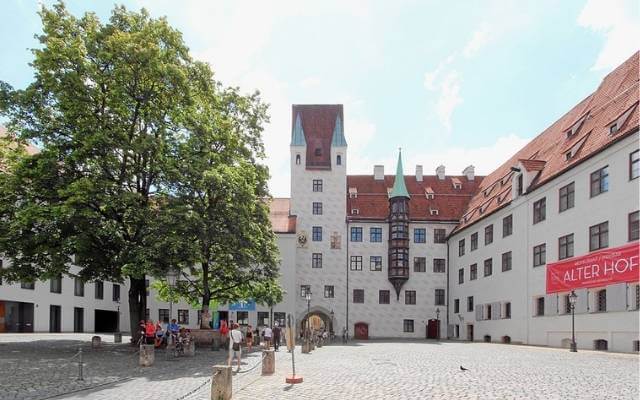
Alter Hof Munich
The Alter Hof is located in central Munich right in the midst of Munich Old Town and stands as the old residence of Louis IV, Holy Roman Emperor.
It is made up of five different wings, each of which had to be restored after its destruction in World War II.
Archaeological excavations have shown evidence that the Alter Hof palace has been around since the 12th century, making it one of the oldest palaces in Munich.
Today, it is open to the public and features a tourist information centre for Bavarian castles.
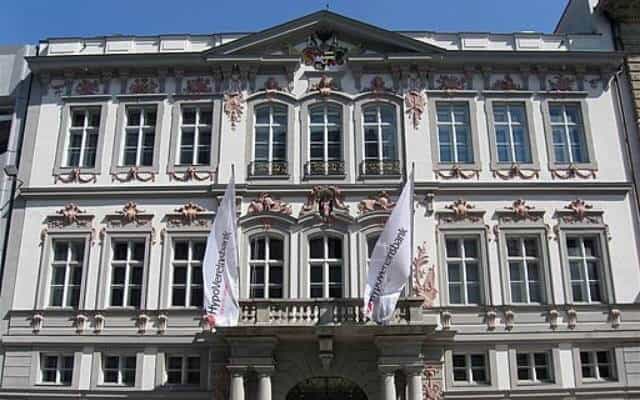
Palais Porcia Munich
A baroque mansion, the Palais Porcia is a Munich-based palace that once was the residence of Count Fugger.
Palais Porcia is considered to be the oldest Baroque-style palace still existing in Munich today, making it a popular destination.
The mansion was built in the Italian baroque style by Enrico Zuccalli in 1693, and in 1710, it was bought by Count Törring. In 1731, it was bought once again by Elector Charles Albert who had his architect restore the mansion in total rococo style.
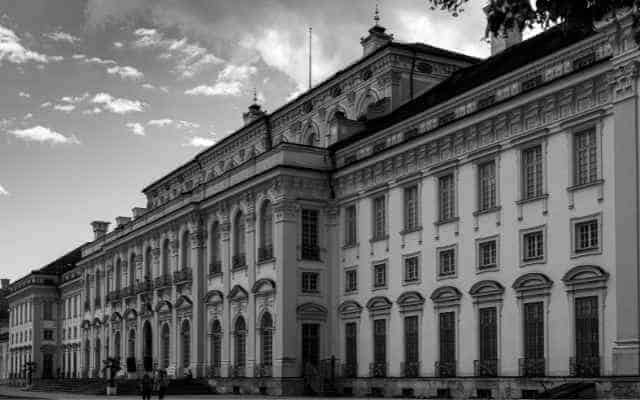
Schleissheim Palace Munich
Hoping to become the next emperor at the time, Elector Max Emanuel had the Schleissheim Palace built in hopes of it becoming his future residence.
It was once planned as a four-wing complex, and the work started in the winter of 1700.
It was done under the design of the famous architect Henrico Zuccalli. Because of the Spanish War of Succession, Max Emanuel was forced into exile which meant the building’s crafting came to a stop, meaning it lacks all of the originally planned wings.
Palaces in Munich: Locations
Palaces in Munich: Our Verdict
Of the many Palaces in Munich, all can easily grab your attention for one reason or another.
From historical interest to architectural interest and from an Interior Design aspect or a locality interest these Bavarian palaces are well worth a look.
In this article, we’ve explored 8 Regal Residences in the city, and we hope you enjoyed taking this journey through these magnificent Palaces of Munich with us.
If you’re keen o some day trip options to Castles or Palaces outside of Munich City then perhaps start with Linderhof in Southern Bavaria near the Austrian border. The very famous Neuschwanstein Castle is above the village of Hohenschwangau nearby also.
Do you have a favourite Munich Palace that you want to visit, or have visited already?
Perhaps you’re more interested in castles – if so please do check out our articles on Schloss Seefeld and Grünwald Castle
Absolute Munich would love to hear from you with your comments.

